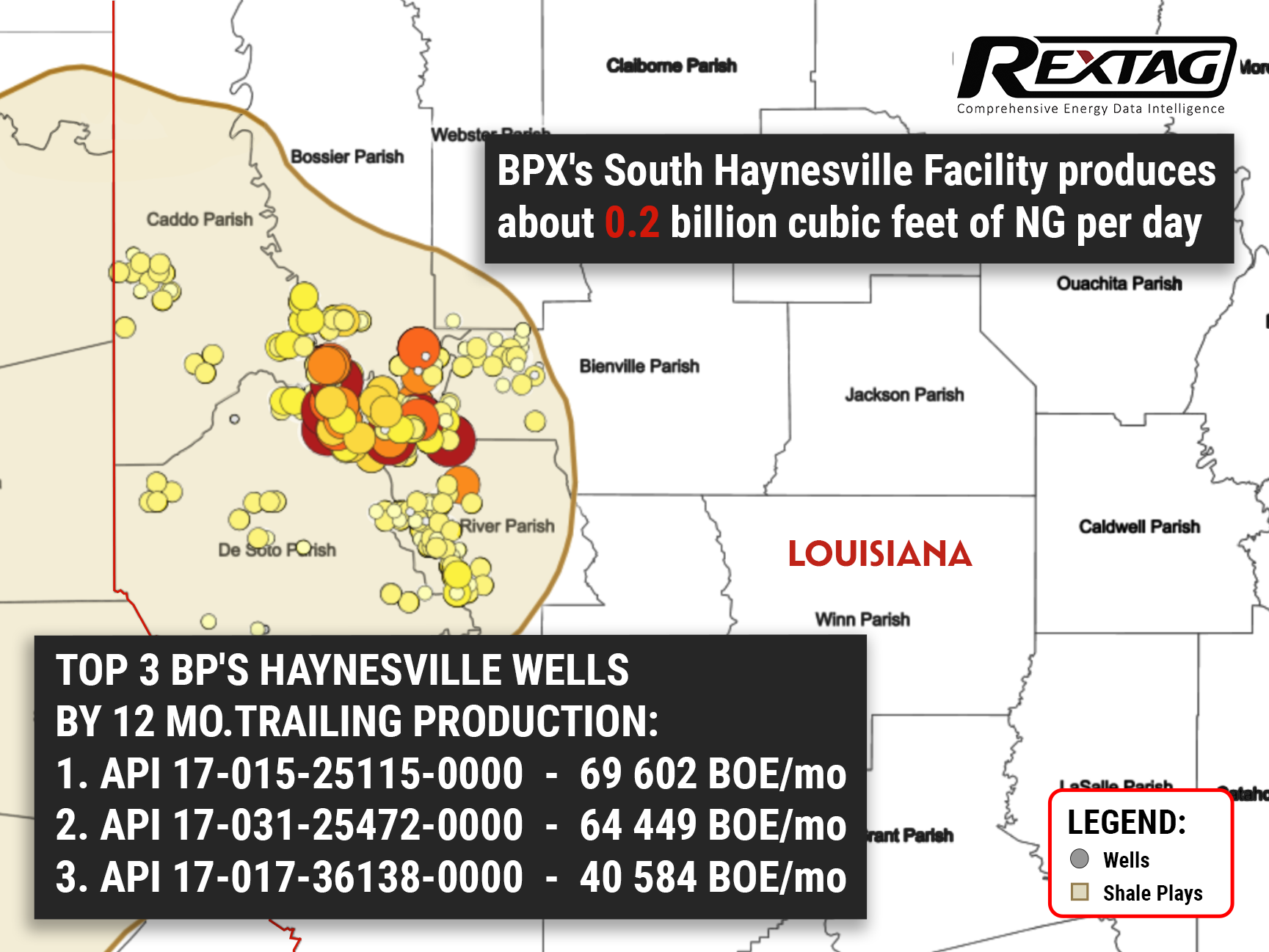Comprehensive Energy Data Intelligence
Information About Energy Companies, Their Assets, Market Deals, Industry Documents and More...
BP's South Haynesville Natural Gas Passed MiQ’s Certification with Flying Colours: a Straight-A Student
12/21/2021
BP's U.S. onshore wells in the Haynesville Shale have ranked among the best performing wells for methane emissions, as the company took the opportunity to become the latest major international energy producer to differentiate its natural gas through MiQ.’s certification.
BPX Energy, the onshore unit of BP, was awarded an A grade on Dec. 8 by MiQ for its methane emissions performance from its South Haynesville Basin wells across Texas. The audit was performed by MiQ’s independent certification system. With such an audit in place, operators can differentiate themselves through methane-emissions performance. MiQ currently certifies about 10 Bcf/d or around 2.5% of the global gas market and 11% of U.S. gas production.
According to the management of MiQ, the company aims to bring forward a market where certified natural gas can be traded around the world in the same way as other traditional commodities, ultimately providing incentives to lower overall emissions of methane. And now, as a result of its certification system's innovative and independently audited nature, operators, buyers, and even regulatory agencies can viably support methane reduction in a global context.
As for BPX, its South Haynesville Facility is composed of 70 wells, and MiQ will issue one certificate per MMBtu of certified natural gas. Buyers and traders will be able to order these certificates through BP's account at the MiQ Digital Registry before the end of the year.
About 0.2 billion cubic feet of natural gas is produced by BPX's South Haynesville facility each day; these well sites have been certified using the MiQ Standard, which determines the facility's methane emissions from "A" to "F". As low as 0.05% methane concentration corresponds to an A grade, while 2% corresponds to an F grade.
Following such success, BPX is now looking closely into its Haynesville, Eagle Ford, and Permian basins assets to find additional opportunities for certification.
In accordance with all MiQ certifications, the BPX’s facility received an independent A grade from an auditor. In this case, GHD, one of eight accredited auditors by MiQ, verified the company.
In order to compile its data for audit, BPX utilized multiple methane monitoring technologies. A few examples include a drone and fixed-wing aircraft that can be equipped with OGI cameras, as well as ground-based cameras. Additionally, BPX measured methane emissions from targeted sources using field-measurement devices.
If you are looking for more information about energy companies, their assets, and energy deals, please, contact our sales office mapping@hartenergy.com, Tel. 619-349-4970 or SCHEDULE A DEMO to learn how Rextag can help you leverage energy data for your business.
Colgate Energy's owners are planning to go public
![$data['article']['post_image_alt']](https://images2.rextag.com/public/blog/Colgate-Energy-owners-are-planning-to-go-public.png)
Colgate Energy is planning to float its shale oil producer in the Permian's Delaware Basin on the stock market. If successful, this IPO would be the first major U.S. oil producer offering since Jagged Peak Energy's IPO in January 2017. Looks like investors’ confidence in the sector is returning as U.S. crude prices hit their highest in seven years late last year S&P energy index delivered roughly twice the return of the S&P 500 in 2021.
$7 Billion Merger of Colgate and Centennial, the 2 Largest Permian Operators
![$data['article']['post_image_alt']](https://images2.rextag.com/public/blog/68Blog_colgate_centennial_merger_announced_05_2022.png)
Despite the circulating rumors concerning Colgate’s attempt to launch an IPO, on May 19 the company decided to combine with Centennial Resource Development Inc. This merger of equals is estimated at $7 billion and will found the biggest pure-play E&P company in the Delaware Basin of the Permian. The transformative combination essentially enlarges companies’ potential and hastens the growth across all financial and operating metrics. According to Centennial CEO Sean Smith, the combined company is anticipated to furnish shareholders with quickened capital return program due to a fixed dividend coupled with a share repurchase plan. Due to a recent report, the merger would increase production 7%, to 145,000 boe/d by the fourth quarter would further ratchet up next year. By third-quarter 2023, the company predicted 160,000 boe/d based on a drilling program of 140 wells per year. Colgate Energy was reported to be getting an IPO last December that sources said would value the company at approximately $4 billion. The combined company will have over 15-years of drilling inventory, assuming its current drilling pace, the companies will produce over $1 billion of free cash flow in 2023 at current strip prices.
![$data['article']['post_image_alt']](https://images2.rextag.com/public/blog/328_Blog_Why Are Oil Giants Backing Away from Green Energy Exxon Mobil, BP, Shell and more .jpg)
As world leaders gather at the COP29 climate summit, a surprising trend is emerging: some of the biggest oil companies are scaling back their renewable energy efforts. Why? The answer is simple—profits. Fossil fuels deliver higher returns than renewables, reshaping priorities across the energy industry.
![$data['article']['post_image_alt']](https://images2.rextag.com/public/blog/327_Blog_Oil Market Outlook A Year of Growth but Slower Than Before.jpg)
The global oil market is full of potential but also fraught with challenges. Demand and production are climbing to impressive levels, yet prices remain surprisingly low. What’s driving these mixed signals, and what role does the U.S. play?
![$data['article']['post_image_alt']](https://images2.rextag.com/public/blog/326_Blog_USA Estimated Annual Rail CO2 Emissions 2035.jpg)
Shell overturned a landmark court order demanding it cut emissions by nearly half. Is this a victory for Big Oil or just a delay in the climate accountability movement?